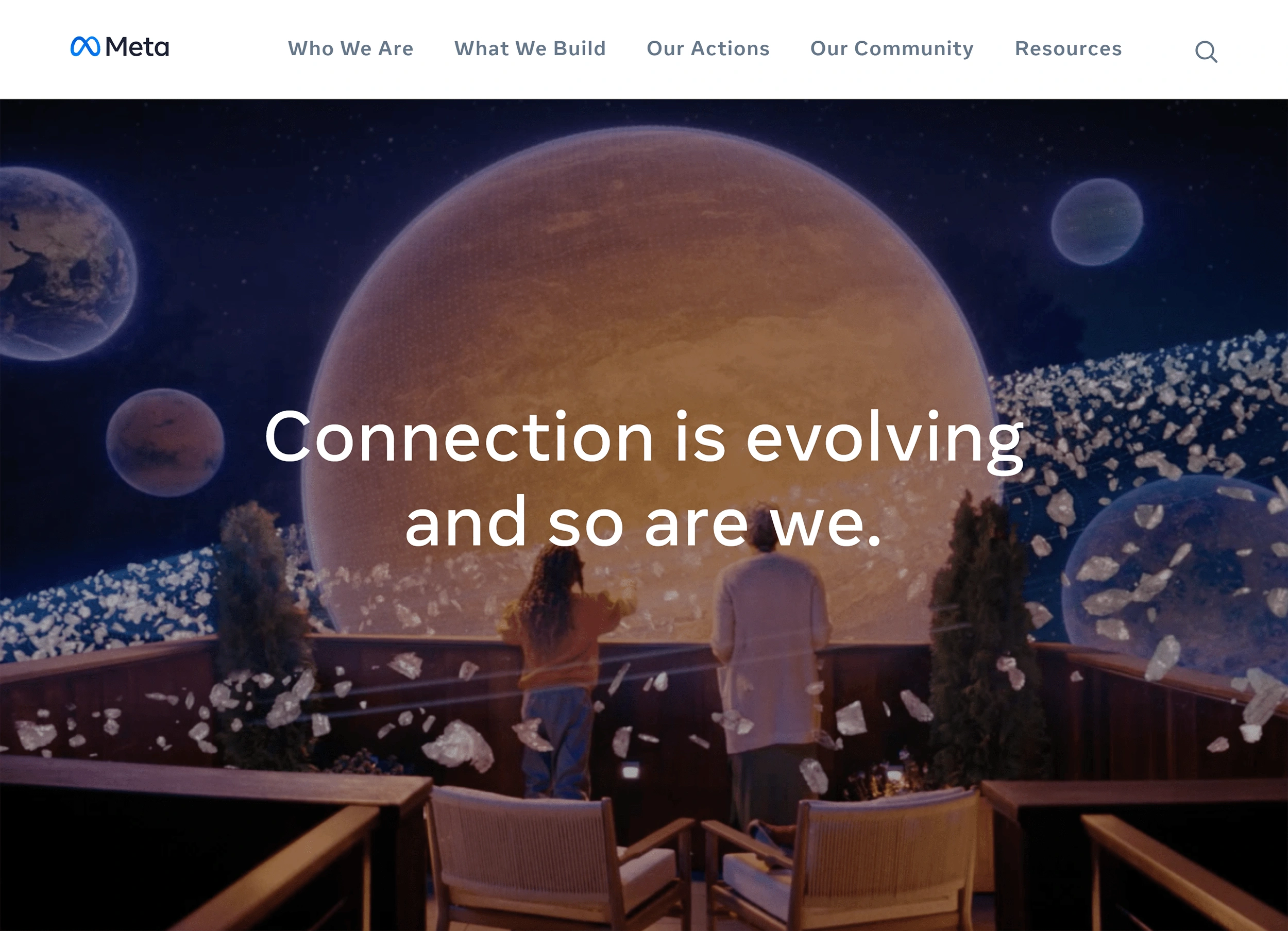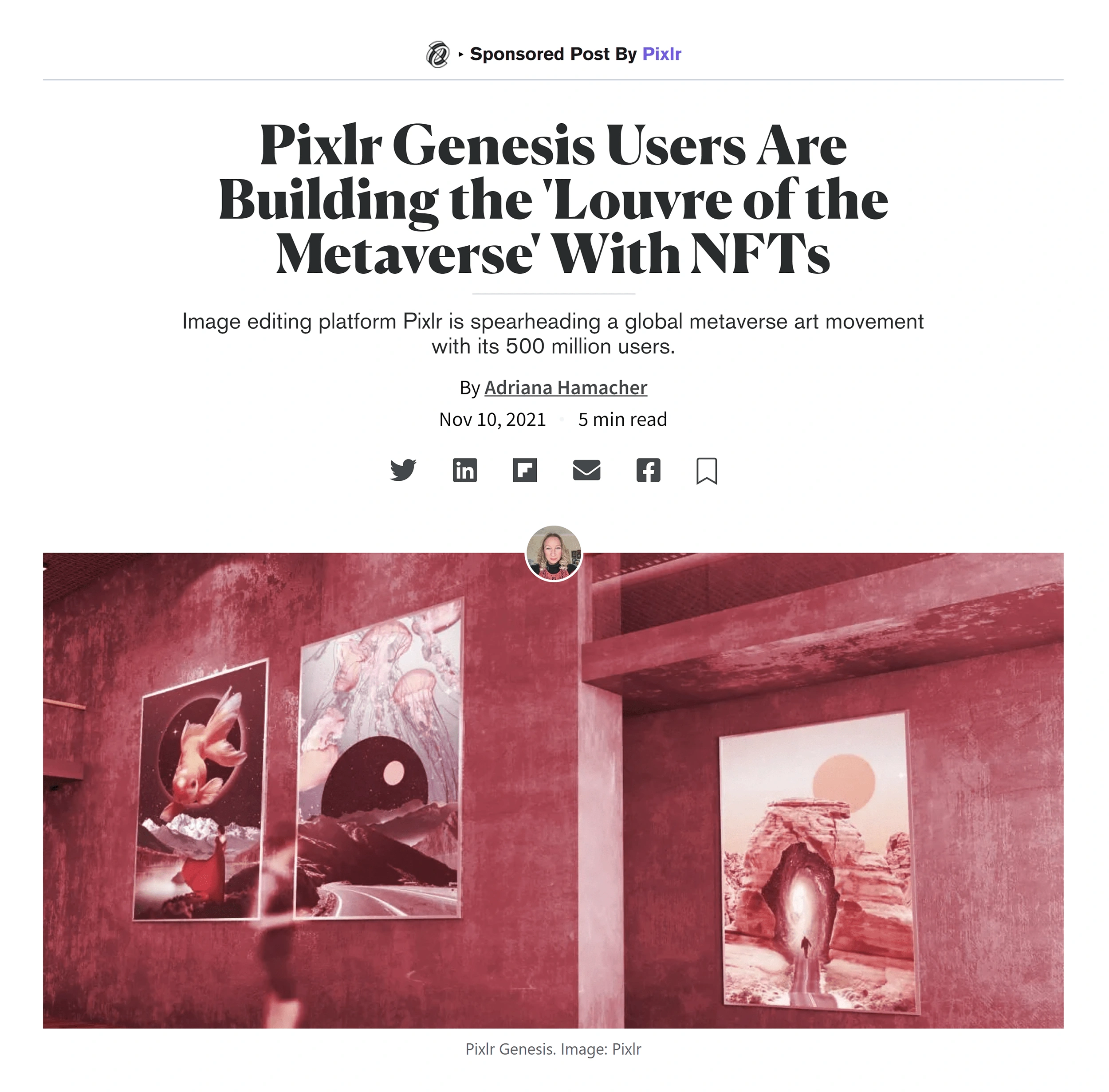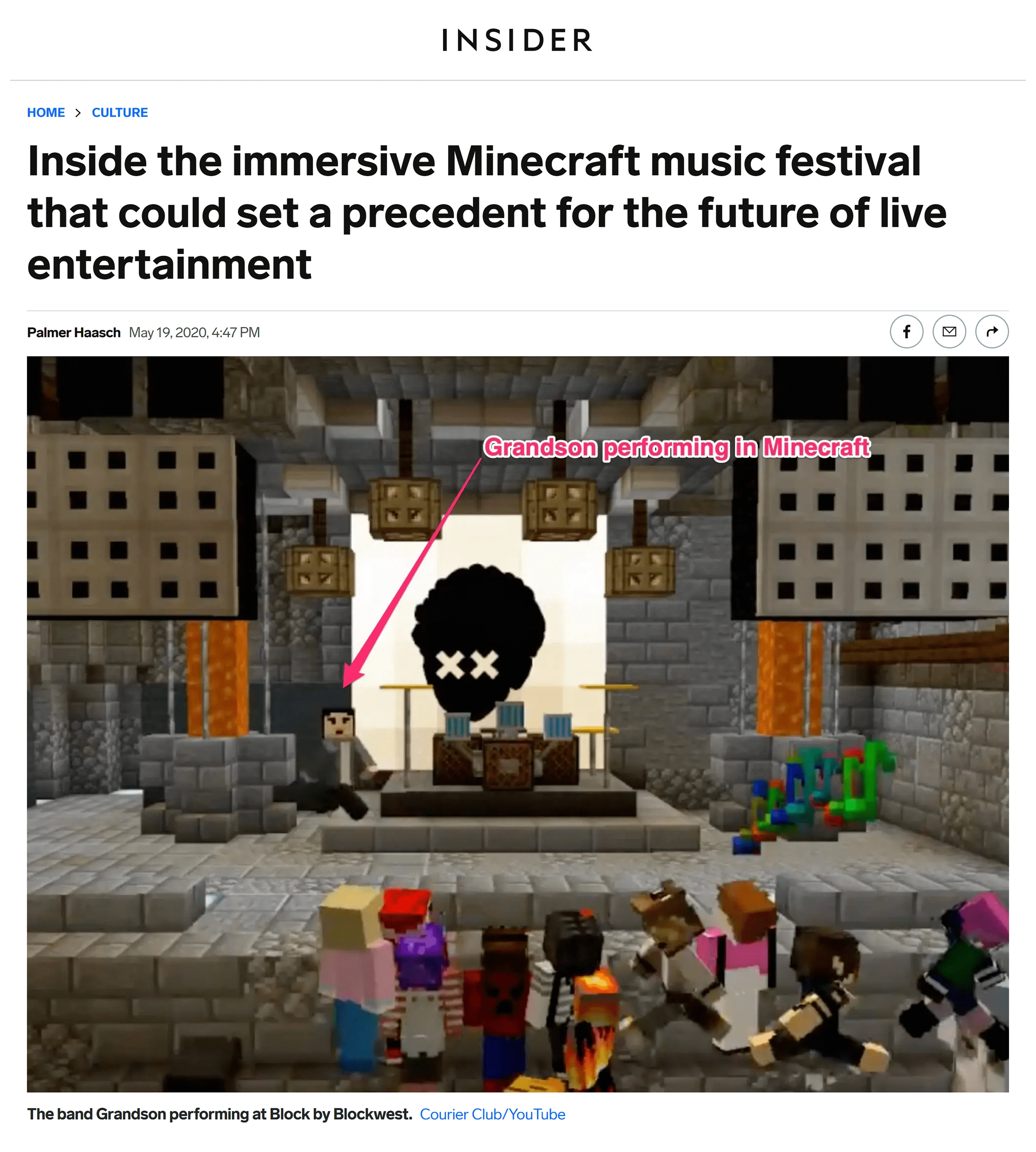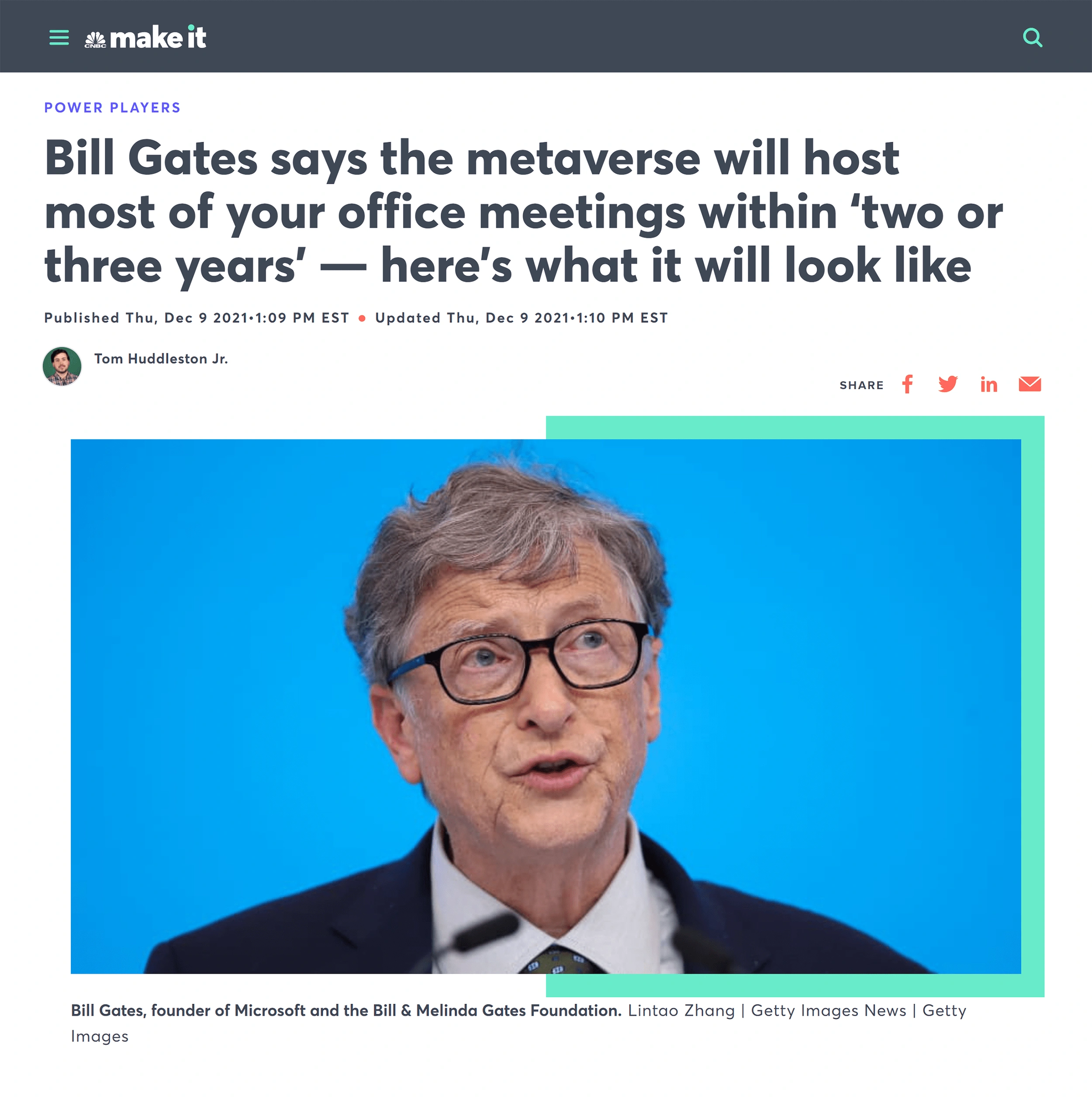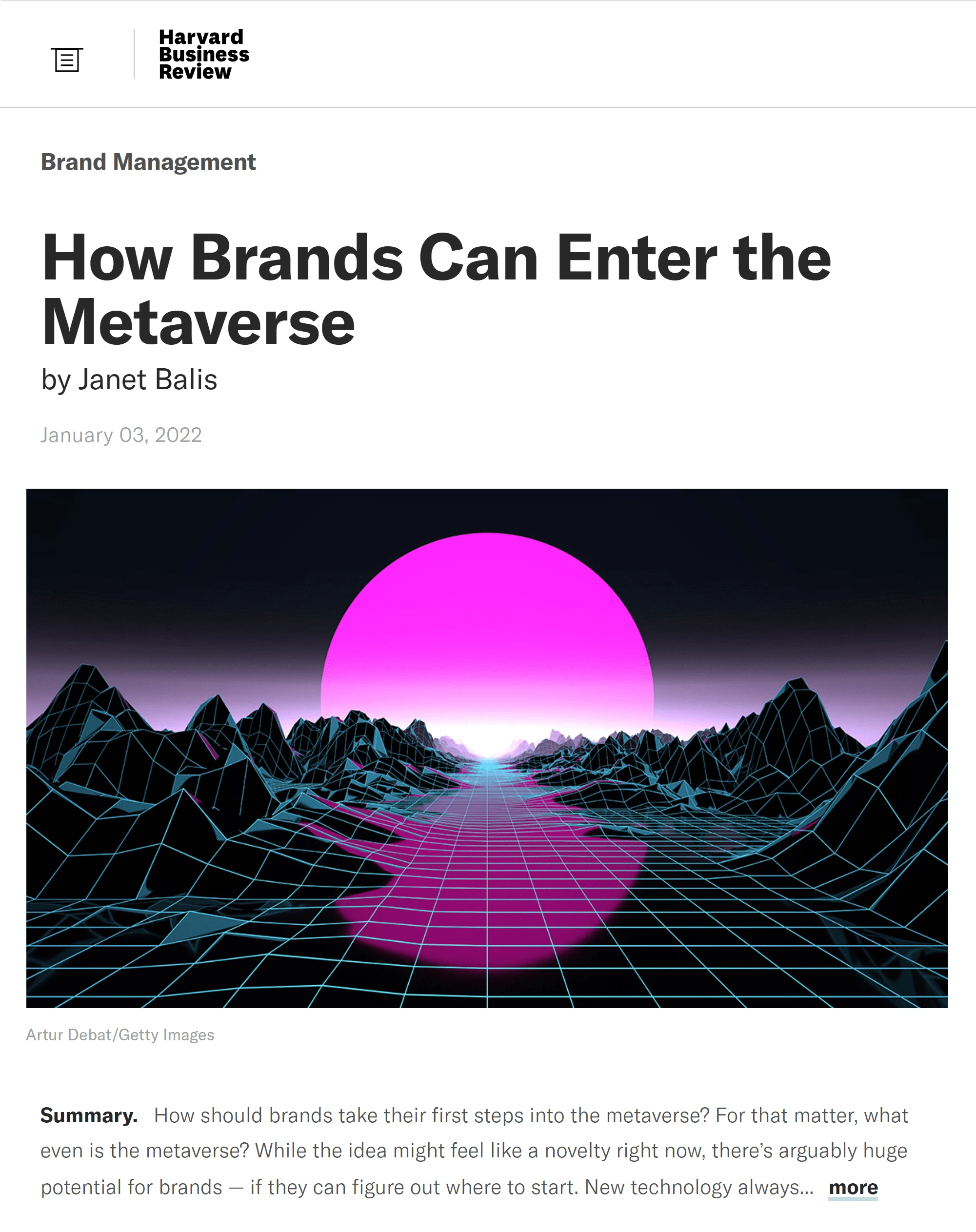In this chapter, we’ll discuss how users will participate in the metaverse on both the consumer and business side.
How We’ll Spend Time as Consumers
While some companies are exploring B2B use cases, by far the most exciting application of metaverse technology is on the consumer side.
In what is arguably the most “obvious” use case, social networks like Meta (aka Facebook) expect we’ll use the metaverse to socialize.
In the metaverse, unlike the “real world”, there’s no need to get dressed up, drive somewhere, and worry about getting in an accident on the drive back home.
Instead, we’ll be able to sit on our couch, plop on a virtual headset, and use our virtual avatar to connect with almost anyone on the planet (in what looks like a realistic 3D world).
Removing the Geographic Barrier
Given we’re talking about a virtual world, the metaverse will remove geography as a limitation.
In particular, users from around the world will be able to visit the digital equivalent of The Louvre, Modern Museum of Art, and even the Eiffel Tower.
But it’s not just historic sites we’ll be able to interact with.
Both users and developers will be able to create fantastical worlds that simply could not exist here in reality. From visiting digital renditions of distant (and imaginary) planets, to “swimming” with whales and dolphins, the only “limits” in the metaverse are the limits of human imagination.
Virtual Dating
In what is a more practical use case, we’ll also be able to date in the metaverse.

While you might roll your eyes and say “I would never do that…,” keep in mind millions of people said the same thing about online dating. Fast forward to today and approximately 39% of straight couples meet via online dating.
Further, as users become more and more comfortable interacting in the metaverse, it’s only natural that sparks will fly. Because of that, the CEO of dating mega-app Tinder has his eyes on the metaverse as well.
Virtual Concerts
While it’s unlikely you’ll be going on a metaverse date anytime soon, music fans have already begun dipping their toes in virtual concerts.
As an example, big names like Lil Nas X and Travis Scott hosted millions of attendees as part of their virtual concerts in 2020.
In fact, thanks to the pandemic lockdowns, musicians from across the globe organized a host of both concerts and full-blown virtual music festivals.
Once again, these were 2D experiences most users watched on their computers or phones. However, with such large attendance numbers, it’s safe to assume fans will show up for an even more impressive (and fully immersive) 3D experience.
Virtual Events
From 3D virtual dressing rooms (where consumers can use their avatars to “try on” clothes before they buy them) to the world’s first virtual Fashion Week event, fashion companies have become enamored by the possibilities the metaverse presents.

Business Use Cases
On the one hand, business applications of the metaverse are nowhere near as exciting as swimming with whales on Pluto.
On the other hand, the mass adoption of Zoom as a work tool is arguably a primitive version of how we’ll interact in the metaverse.
Because of that, some companies are making big bets on how employees and their colleagues will meet with one another in the future.
Virtual Meetings
Some of today’s top tech companies - including both Meta and Microsoft - are betting on virtual meetings in a big way.
To the point billionaire Bill Gates predicted virtual worlds “are the future of business meetings.”
Unlike virtual dating, however, initial versions of a metaverse work environment already exist.
Case in point: Workrooms.
Developed by Meta Platforms (aka Facebook), Workrooms is a digital work environment replete with virtual whiteboards, digital avatars, and the ability to share your computer screen with coworkers.
And in what is a direct competitor to WorkRooms, Microsoft’s Mesh platform has been available to developers and enterprise-level companies since April of 2021.
Virtual Conferences
Understandably, the live events industry was one of the hardest hit by the 2020 pandemic.

This, in turn, acted as a tailwind to inspire entrepreneurs who envision the metaverse as the next evolution in industry conferences. And their argument is pretty strong.
Similar to virtual dating and concerts, virtual conferences remove the geographic limitations (flights, travel expenses, visa restrictions) that prevent many people from attending.
Because of that, companies like Orbits (not to be confused with travel giant Orbitz) and Alt Ethos are betting on metaverse events in a big way.
Virtual Product Demos
Not everything in the metaverse needs to be grandiose, however.
Instead, some companies see a virtual world as the perfect platform for rolling out product demos.
With the ability to reach thousands and even millions of customers at once (for very little money), the metaverse could act as a vehicle for getting rapid feedback on prototypes and cutting-edge products.
The Human Side of a (Potentially) Trillion Dollar Industry
Despite the industry’s profit potential, however, not everyone is excited.
Assuming the metaverse becomes as popular as social media, it will consume trillions of hours of humanity’s time (given 3.1 billion people already spend an average of 1,300 hours on social media each year).
Because of that, serious questions are being asked regarding who is going to “own” the metaverse.


